Understanding Fish Migrations
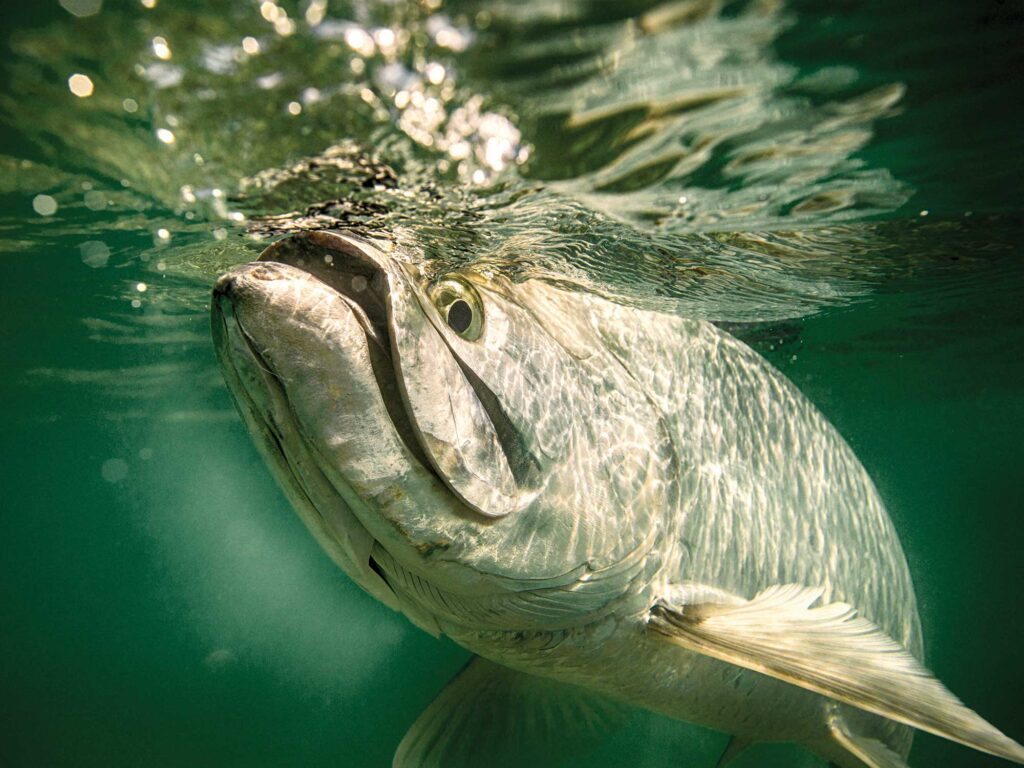 Species such as tarpon don’t have stock assessments, partly because they’re not commercially harvested. That’s when nongovernmental organizations step up to track the fan favorite.
Kevin Dodge
Species such as tarpon don’t have stock assessments, partly because they’re not commercially harvested. That’s when nongovernmental organizations step up to track the fan favorite.
Kevin Dodge
Roxanne Willmer hears a lot of fish stories. As the tagging director for Gray FishTag Research, Willmer is in regular contact with anglers, often on the boat with them catching and tagging target species. She enjoys some of those fish stories more than others.
“I love it when I hear one thing about fish movement, but the science tells a different story,” Willmer says with a sly smile.
That foundation of scientific information on the migration habits of saltwater fish movements continues to expand as a growing cohort of scientists and collaborators ramp up their research, including into some species that have not been a priority until recently. That list of focus species includes billfish, tarpon, roosterfish and false albacore. What do they have in common? Their primary value is recreational, not commercial.
“Many of the species we target as anglers fall below the radar for federal and state management agencies,” says Dr. Andy Danylchuk, professor of fish conservation at the University of Massachusetts Amherst. “For example, there’s no stock assessment for tarpon because they’re not commercially harvested. And because there’s no stock assessment, state and federal agencies generally don’t throw money at big, expensive movement studies.”
And yet there is interest in those studies because those fish do have recreational value, often significant in terms of angler interest and the economic impact those anglers can have on communities.
Fortunately, many nongovernmental organizations are stepping up, helping to raise money and partnering with scientists to tackle the work. The efforts are often undertaken with additional support from recreational anglers and charter captains whose volunteer commitments not only significantly expand the amount and type of data that can be gathered, but also help strengthen stakeholder communities and their passion for the fisheries.
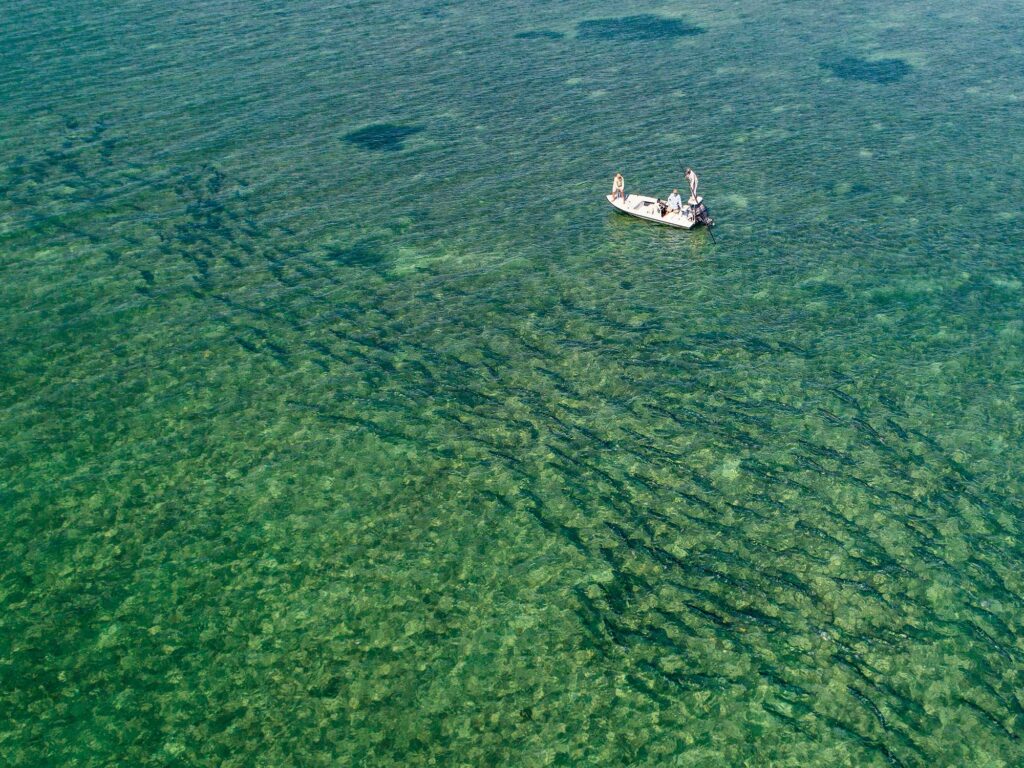 Spawning Florida Keys tarpon migrate in the summer—some north along the Atlantic shoreline, and others up the Gulf Coast.
Jason Stemple
A Variety of Approaches to Migration Studies
Spawning Florida Keys tarpon migrate in the summer—some north along the Atlantic shoreline, and others up the Gulf Coast.
Jason Stemple
A Variety of Approaches to Migration Studies
Tracking saltwater fish distributions and migrations can be accomplished in many ways, from the relatively simple to the extremely complex. The former can include genetic analysis of fin clips to determine if fish found in different locations are part of the same or different stocks. It’s not that genetic analysis is itself simple, but collecting the samples is straightforward enough that volunteers can participate.
Affixing so-called “spaghetti tags” is also relatively simple and inexpensive, so it’s easily accessible for volunteers. Costs and complexity increase when studies involve affixing acoustic or satellite tags on target fish. The value and quality of the data varies based on the approaches too.
A nonprofit division of Gray Trophy Fish Mounts, Gray FishTag Research launched in 2015 and primarily works with spaghetti tags, individually coded plastic tags inserted into a fish near its dorsal fin.
“Every year the number of tagging partners and numbers of tagged fish grow,” Willmer says. “Last year our cooperators tagged 4,310 fish covering 76 species.”
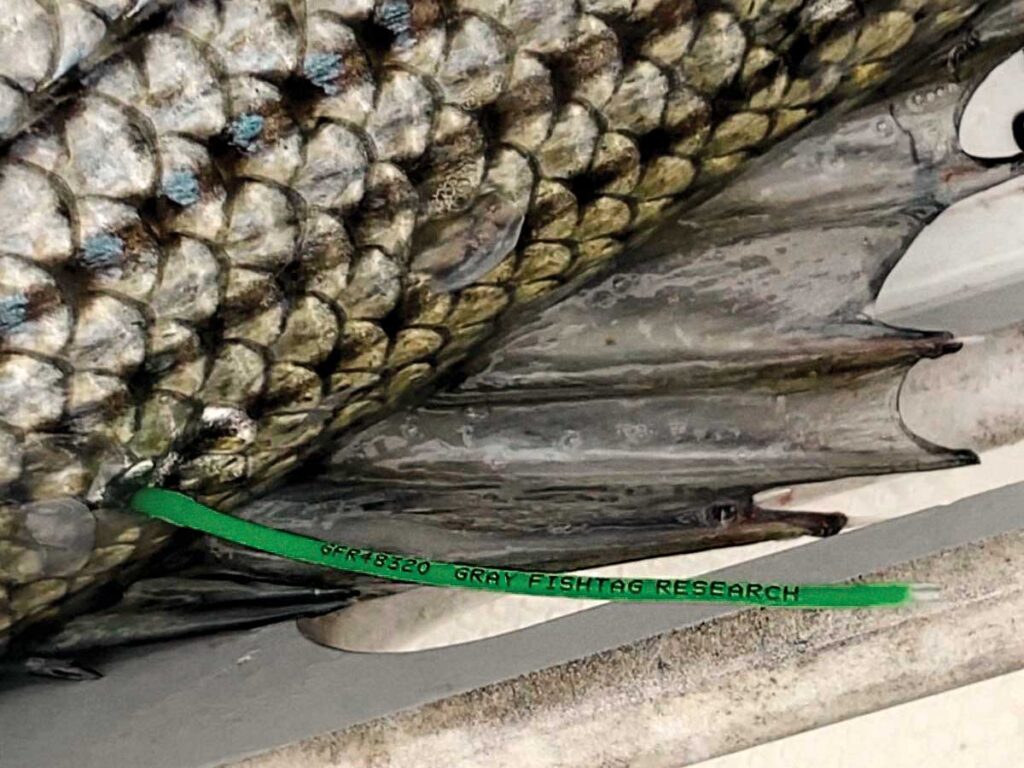 Spaghetti tags have limitations, with tag and recapture sites offering just two data points.
Courtesy Gray FishTag Research
Spaghetti tags have limitations, with tag and recapture sites offering just two data points.
Courtesy Gray FishTag Research
Compared to acoustic and satellite tagging, data from spaghetti tags has limitations, with tagging and recapture sites offering just two data points (complemented by fish size, of course). But because it’s a cost-effective way to put a lot of tags into a lot of fish, the information can still help inform management decisions. Importantly, it also connects anglers to the process.
Gray FishTag Research publishes tagging and recapture information on its website, and the information is free and accessible to anyone who wishes to view it, a group that includes fisheries managers and interested anglers.
Silver Kings and Acoustic TagsAcoustic and satellite tagging take tracking fish movements to another level. Danylchuk was among the principal researchers in a large study that used acoustic tags to track tarpon movements. For the study, sponsored by Maverick Boat Group and funded by the Bonefish & Tarpon Trust, researchers surgically implanted acoustic tags into the abdomens of about 200 angler-caught tarpon from 25 pounds to 150 pounds along the southeastern coast of the US, including the Florida Keys, Charlotte Harbor and Apalachicola.
About the size of an AA battery, the acoustic tags send out unique pings that are detected by stationary receivers moored to the ocean floor. The study team placed about 100 receivers in the Florida Keys, but those are among a much larger existing network of thousands of receivers stretching from the Chesapeake Bay and throughout the Gulf of Mexico. Although the team didn’t get information from every tagged fish—likely from either post-release mortality or natural mortality—Danylchuk says more than half of the fish were pinged, many for multiple years. Researchers have to manually retrieve the receivers to download the information, then they can crunch the data.
“Data analysis is no small feat,” Danylchuk says. “You’re not doing this with a calculator and an Excel spreadsheet.”
Among the high-level findings were that tarpon gather annually in the Keys to spawn, then migrate in the summer—some north along the Atlantic shoreline, and others north along the Gulf Coast. The fish also tend to repeat their individual routes year after year, often within the same time window of just a couple of weeks.
Overlaid with other information, such as water conditions, water movements, prey species such as menhaden and mullet, and the presence of co-evolved predator species such as hammerhead sharks, the information becomes even more valuable. In short, Danylchuk says, the tarpon migration study helps show the importance of managing tarpon more widely than a state-by-state approach.
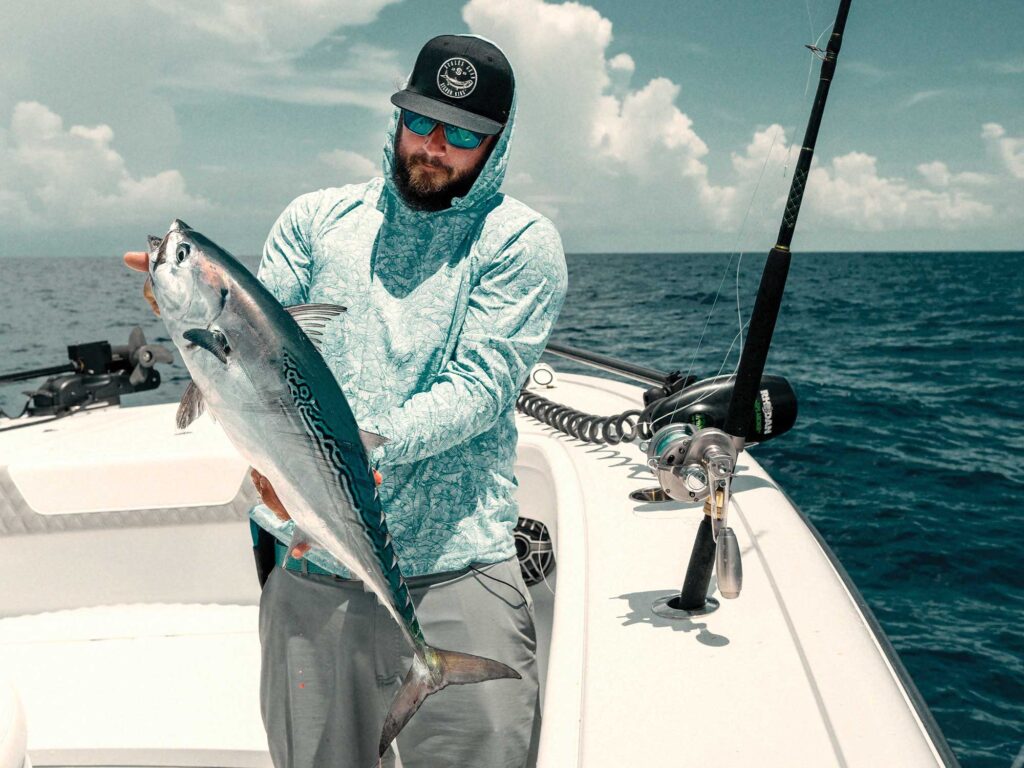 Acoustic tag studies of false albacore, with help from Costa Sunglasses, track just how fast and far they swim.
Jason Stemple
The Benefits of Sat Tags
Acoustic tag studies of false albacore, with help from Costa Sunglasses, track just how fast and far they swim.
Jason Stemple
The Benefits of Sat Tags
Researchers studying false albacore also use acoustic tags. The American Saltwater Guides Association’s Albie Project, with collaborators including the New England Aquarium, Costa Sunglasses and offshore wind company Orsted, tagged more than five dozen albies in Nantucket Sound in 2022. The fact that almost all started pinging immediately provided one encouraging finding: Catch-and-release survival was excellent. The tracks also show something else that won’t surprise anyone who chases little tunny: They move a lot, and they are fast.
Satellite tagging can provide even more robust data on species movements. Programmed to detach from the fish host at a predetermined interval—up to a year or more for some species—the tags automatically upload information, including the travel track, depths and water temperatures, to a satellite network upon rising to the water’s surface.
The approach has its challenges, not the least of which is cost. A satellite tag tallies between $4,500 and $5,000 when considering satellite and analysis costs, not to mention the cost of boat time. Their size requires fish to be fairly large too. And a lot can happen to a tagged fish, including getting eaten by sharks or caught by commercial fisheries. So, it can require a huge investment for a satellite tag study that will produce enough tracks to be statistically reliable from a purely scientific standpoint.
That doesn’t mean the information from even small satellite tag studies isn’t valuable. For example, satellite tags are helping researchers better understand roosterfish behavior and migration patterns. Spoiler: They aren’t always surf-dwelling homebodies.
Billfish are a big beneficiary of satellite tagging studies. As the conservation director for the International Game Fish Association, Dr. Bruce Pohlot works a lot with satellite tags. Most of his work is collaborative, counting on project partners at Stanford University, recreational anglers and fishing-industry partners to assist with the tagging and the funding.
Costa’s Marlin Fly Project, for example, brought together a bunch of the company’s pro anglers at Magdalena Bay, Mexico, to tag understudied striped marlin. Using fly tackle only, the volunteers caught and tagged 15 striped marlin during the 2022 event. With its small sample size, the event was as much about raising awareness—the video Costa produced has garnered plenty of eyeballs—as it was about collecting data. But the migration data was also valuable.
Read Next: NOAA Study Finds Ocean Temperatures Impacting Migration Patterns
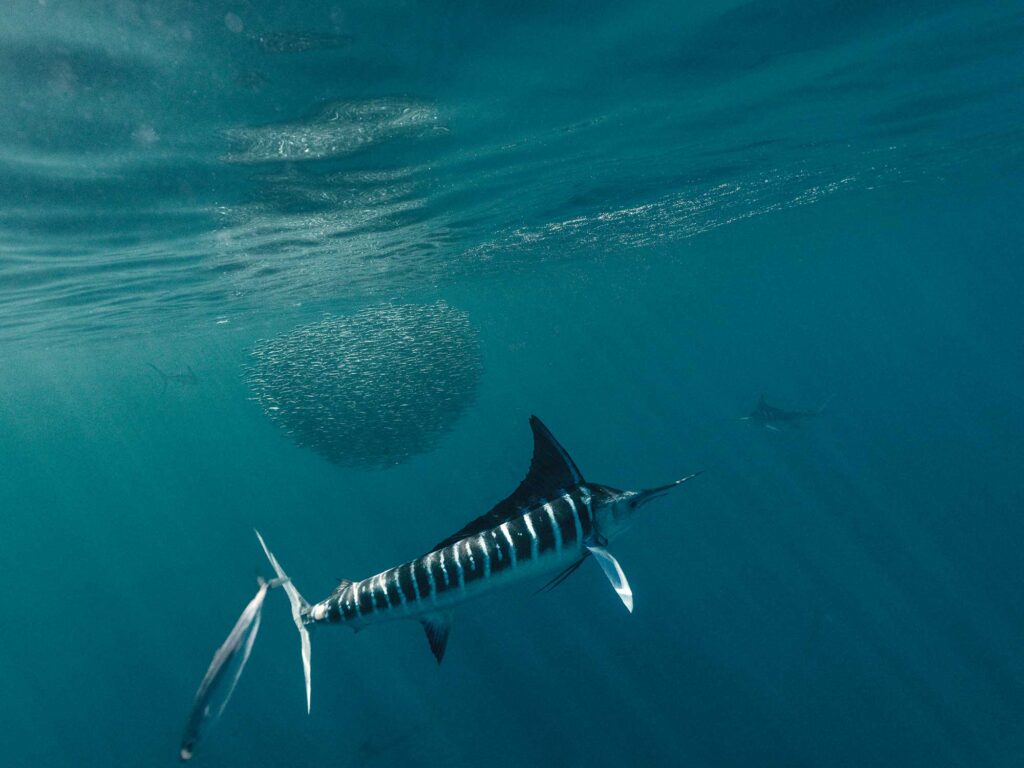 Off Magdalena Bay, Mexico, striped marlin gather in astonishing numbers. A recent tagging study hopes to shine light on the migrations of this understudied billfish.
Courtesy Nick Price / Costa
Off Magdalena Bay, Mexico, striped marlin gather in astonishing numbers. A recent tagging study hopes to shine light on the migrations of this understudied billfish.
Courtesy Nick Price / Costa
The importance of engagement also looms large when IGFA partners with billfish tournaments. At participating events, entrants are invited to sponsor satellite tags, which they affix to released billfish. While the cost is not insignificant, the tax-deductible donation is relatively palatable to players in the high-dollar billfish angling world.
“It’s really cool because it brings in the recreational fishing community,” says Pohlot, who notes the IGFA has deployed more than 600 satellite tags. “And we get important science done because we can learn where these fish go and basically look at all the different conditions they see and what drives their behavior.”
The IGFA also appeals to the competitive nature of billfish tournament participants with its annual IGFA Great Marlin Race, a just-for-fun competition in which tag-sponsoring teams compete to see whose tagged billfish travels the longest distance after the tournament. The IGFA shares animated tracks of the longest traveling billfish—some of which have traveled more than 7,000 miles in just a few months—on YouTube videos. While entertaining, those animated videos importantly show the limits to setting arbitrary management boundaries.
Looking AheadAll of this effort has impact.
“In 2012, [the] IGFA was a major driver in the Billfish Conservation Act,” Pohlot says. “We were able to point at the data and say: ‘Look how far these fish are going. Look how important they are to recreational anglers. Look at the economic impact of recreational fishing for these species compared to the value of their flesh at market.’ The act actually made it illegal to sell billfish in the continental United States.”
Ongoing research also provides a foundation for work to come. Danylchuk and his team are currently working on research that will utilize analysis of stable isotopes to help identify how tarpon utilize forage fish. And every time a fish is tagged with either a satellite tag or an acoustic tag, that fish’s movement is added to growing databases that will bring yet more clarity to migration and movement patterns.
“Everyone wants to hear a story,” Willmer says. “Every time a tag goes into a fish, that fish will have a story to tell.”
The post Understanding Fish Migrations appeared first on Salt Water Sportsman.
- Home
- About Us
- Write For Us / Submit Content
- Advertising And Affiliates
- Feeds And Syndication
- Contact Us
- Login
- Privacy
All Rights Reserved. Copyright , Central Coast Communications, Inc.